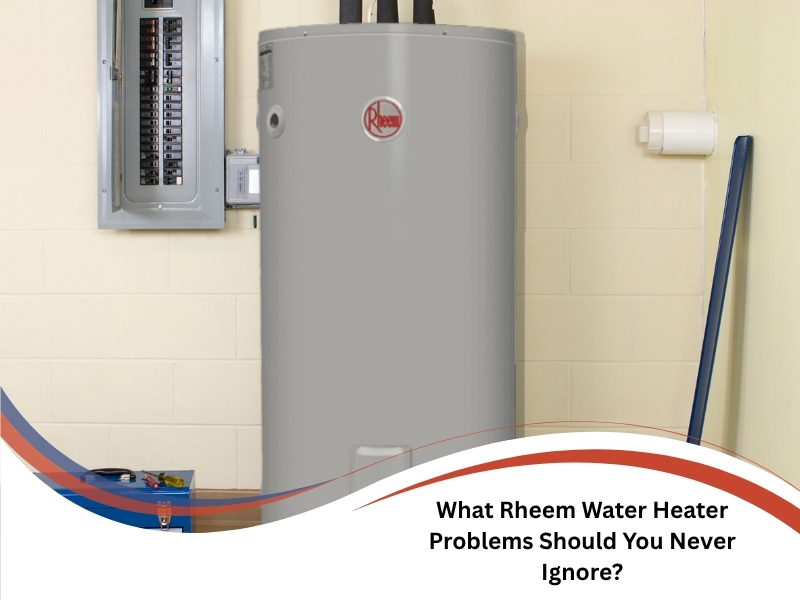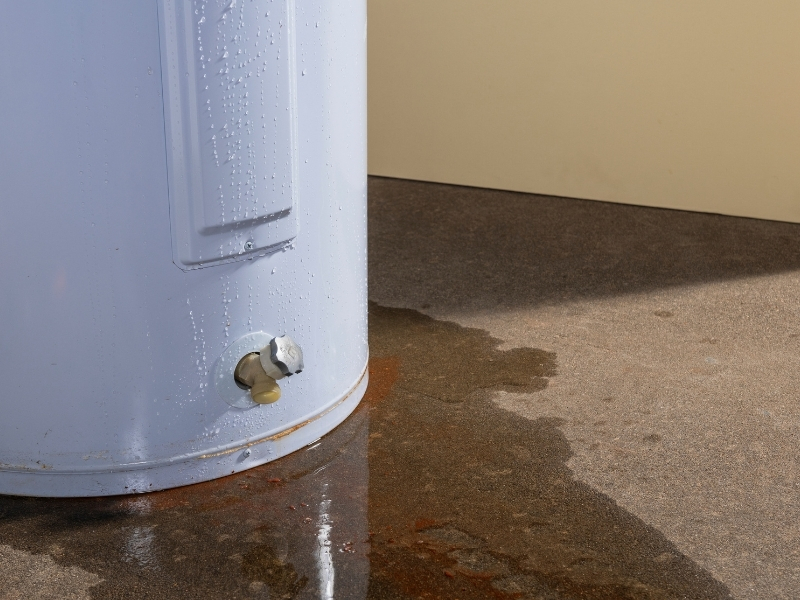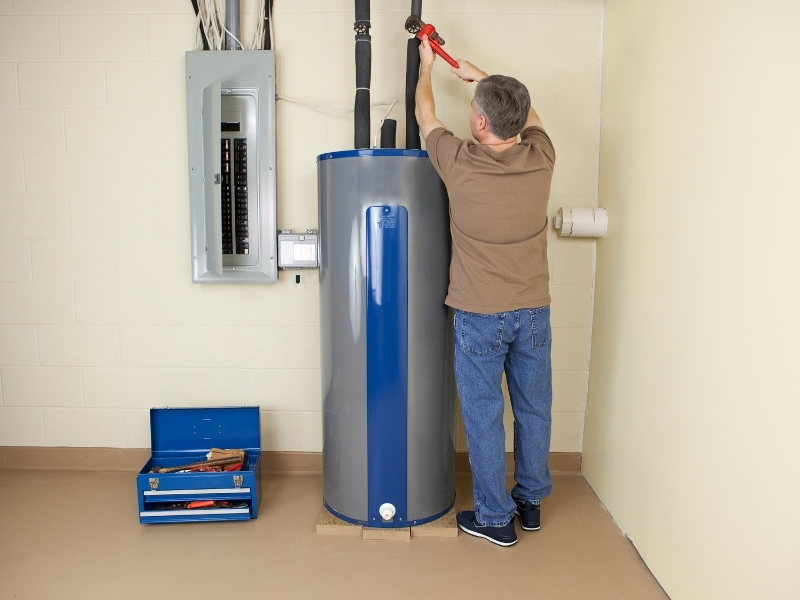It’s easy to overlook subtle changes in your hot water system. Still, certain Rheem water heater issues can quickly escalate if left unchecked. From inconsistent heating to warning noises, these issues often indicate more serious malfunctions. Recognising what’s minor versus what needs urgent attention is key to protecting your plumbing and energy bills. This article examines the most common signs, causes, and solutions for Rheem water heater problems that warrant attention.
Why do early Rheem water heater problems go unnoticed?
Homeowners often miss the early warnings of a faulty water heater. These signs might seem harmless at first or get mistaken for temporary quirks in the plumbing.
- Slight temperature changes are often dismissed as normal fluctuations, but they may indicate a failing thermostat.
- Odd noises, such as popping or rumbling, are often ignored, yet they frequently indicate that sediment is accumulating inside the tank.
- Small leaks may dry up quickly, but often indicate expanding cracks or loose fittings.
- A mild delay in hot water delivery may indicate issues with the burner or dip tube, rather than low water pressure.
Many of these signs appear gradually and can easily be missed in day-to-day routines. However, ignoring them can lead to more serious problems with your Rheem water heater over time. If the system’s heating efficiency declines or it starts acting unpredictably, it may already be past the point of a simple repair.
What are the early signs of a Rheem water heater problem?
You can spot water heater problems early by paying attention to a few key symptoms. These give you a head start before more damage kicks in.
- Discoloured or rusty water signals corrosion inside the tank or ageing anode rods.
- A sulphur or metallic smell in hot water usually means bacteria or sediment contamination.
- Water pooling near the unit may be caused by issues with the pressure relief valve or minor cracks.
- Fluctuating water temperatures indicate possible thermostat or heating element failures.
Leaving these signs unchecked often puts unnecessary stress on your system and leads to more frequent, expensive faults. By stepping in early, you give yourself the best chance to keep things running smoothly. If you’re starting to notice persistent issues, now’s a good time to discover effective solutions for common Rheem heater problems before they escalate.
How do minor faults escalate into serious system failures?
One faulty part in a Rheem heater can cause a chain reaction. What starts as a glitch may end up affecting the entire unit if not resolved promptly.
- A failing dip tube reduces water flow, which overworks the burner or heating element.
- Sediment buildup lowers energy efficiency, stressing components and shortening the system’s lifespan.
- Leaking valves raise tank pressure, which might rupture internal seals.
- Corroded parts weaken nearby fittings, leading to bigger structural risks inside the unit.
Over time, neglecting minor faults can cause the system to work harder. That added strain often leads to total breakdown. This is why it’s risky to DIY complex fixes. There’s a reason professionals warn against why you shouldn’t change a hot water heater yourself — a mistake here could void warranties or worse, cause a safety hazard.
What can stop recurring Rheem water heater problems?
To prevent problems from recurring, you need to address the root causes, not just the symptoms. That means addressing system-wide conditions, not patching visible faults.
- Flush the tank at least once a year to prevent sediment buildup.
- Replace the anode rod regularly to avoid tank corrosion.
- Install a pressure regulator to reduce system stress and leaks.
- Test the thermostat and element together, not separately.
Reliable long-term fixes often require the expertise of a qualified technician. But timing matters too. If faults appear shortly after repairs, it may be time to decide between fixing or replacing your water heater, especially if parts like the burner or control board keep failing. Recurring faults often reflect deeper design or installation issues that quick fixes won’t solve.
How do you maintain a Rheem unit to avoid future trouble?
Regular maintenance is the key to keeping your Rheem system running smoothly. Preventive checks are more cost-effective than emergency repairs and extend the life of your unit.
- Drain and inspect the tank every six months if your area has hard water.
- Inspect valves, hoses, and joints for signs of wear every quarter.
- Replace the thermostat if the water temperature seems inconsistent.
- Confirm pilot lights and electronic controls are functioning before winter.
Most importantly, track how your system performs after each check-up. Overheating or excessive pressure can indicate hidden issues. As part of your home safety checks, it’s also smart to understand how hot water problems can lead to scalding injuries, especially with older systems that lack updated temperature controls.
Should you consider replacing your system after repeated faults?
Replacing a Rheem unit can feel like a big call, but sometimes it’s the smartest choice — especially if costs keep stacking up.
- Repairs that exceed 50% of the cost of a new unit usually signal it’s time.
- Systems older than 10 years often suffer from multiple inefficiencies.
- Water heaters that need service more than twice a year become high-maintenance risks.
- Newer systems offer better energy performance and lower utility bills.
If you’ve already repaired the same component twice, replacement is often a more economical option. Continued patchwork can wear you thin, both financially and logistically. Modern units also meet stricter safety and efficiency codes, which could be critical if you’re renovating or upgrading your plumbing setup.
Common faults vs system-wide failure
Symptom | Cause | Quick Fix | May Indicate Larger Issue |
Lukewarm water | A faulty thermostat or element | Thermostat reset | Tank corrosion |
Rust-coloured water | Failing anode rod | Rod replacement | Internal tank damage |
Popping noises | Sediment build-up | Tank flush | Structural stress |
Water under unit | Leaky valve or crack | Valve tighten | Pressure imbalance |
Unreliable pilot light | Gas valve issues | Component swap | Burner or regulator fault |
What should you focus on when resolving long-term heating issues?
Addressing ongoing water heating issues requires a combination of technical expertise and timing. Knowing when to intervene — and how — can make the difference between another call-out and lasting peace of mind.
- Map out when your problems started and track any patterns.
- Look beyond symptoms to the underlying cause of repeated breakdowns.
- Avoid swapping parts without diagnosing the broader system impact.
- Choose licensed technicians who specialise in hot water systems.
Long-term issues usually involve deeper wear or installation flaws. If you’ve had repeat failures across multiple components, it’s time to look at bigger fixes or replacements. For guidance tailored to your setup, consider Sydney Hot Water Systems for your water heater needs.




